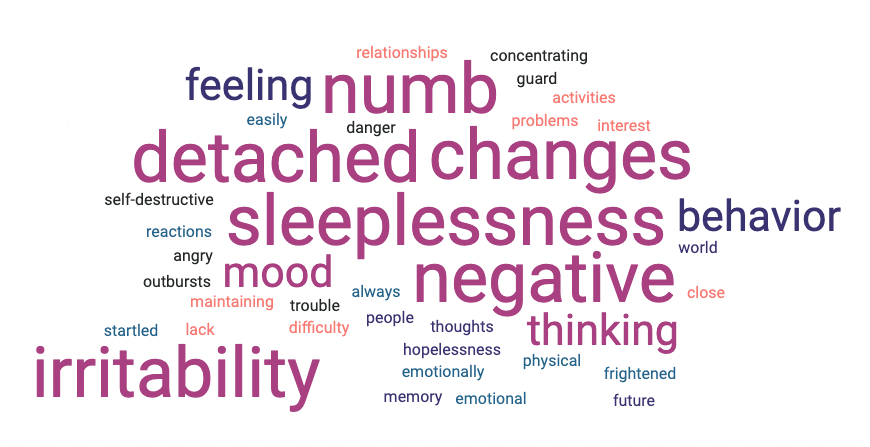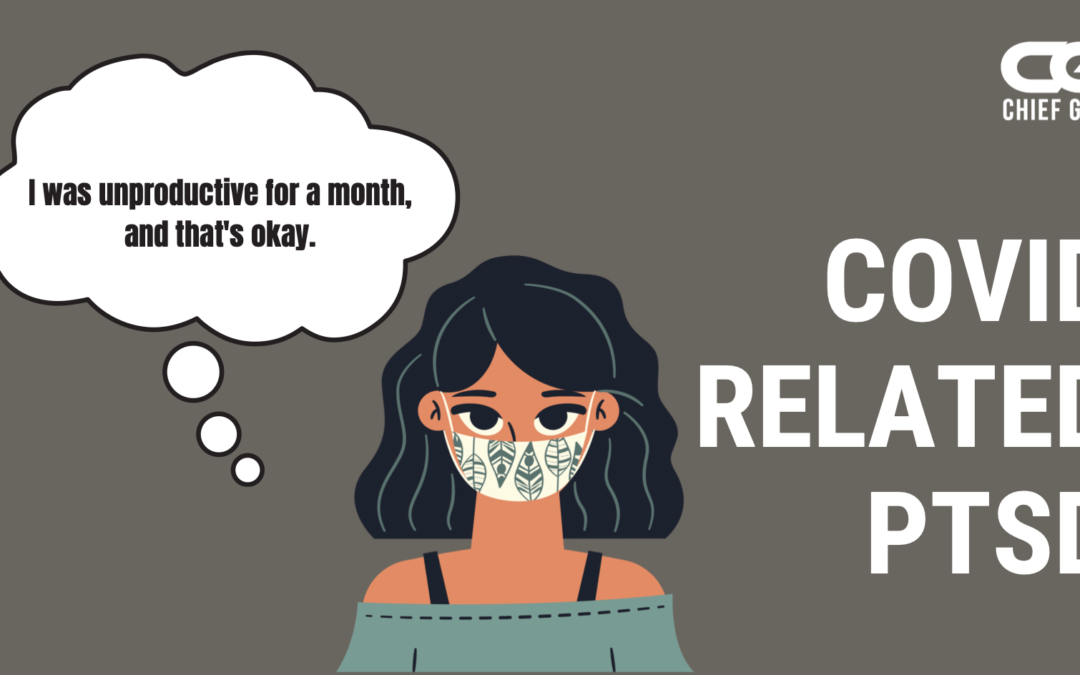I remember listening to a talk by Simon Sinek at the beginning of the pandemic. He said, “no one has the emotional strength to avoid the pain of trauma – any trauma… A dear friend of mine who is active duty military explained to me that every member of the military who goes to combat will, at some point, has (sic) to deal with the impact of that trauma. Some will feel that stress quickly while others won’t feel the effects until months after their return.”
The pandemic is something that none of us has experienced in our lifetime. Since I’m the type to spring into action whenever there is a crisis, I wondered if I would feel the impact of the trauma everyone was warning us about. Well, folks, it happened. 15 months after the start of lockdowns, nine people in our family got COVID. What was worse was that I was “on vacation” 15 hours away when I found out. My “vacation” turned into a continuous remote planning session to order food, and disinfectants, and ensure everyone could quarantine away from each other.
I first started feeling tired about a month after everything happened.
I didn’t have much motivation and sometimes watched up to 10 hours of Netflix a day. I barely worked. I couldn’t sleep. As time went on, I became more detached. Things that I typically would think were fun, were no longer. I cried all the time. I couldn’t control my emotions.
Life seemed REALLY HARD. All told, I was pretty much useless for a month.
Wendy Fong
Post-traumatic stress related to COVID, sometimes called post-covid stress disorder or covid stress syndrome, is real. You don’t have to have contract COVID to get it. According to the Mayo Clinic, PTSD symptoms are generally grouped into four types: intrusive memories, avoidance, negative changes in thinking and mood, and changes in physical and emotional reactions. Symptoms can vary over time and from person to person. Click here for a full list of symptoms.

Mine all fell into the last two categories of negative changes in thinking and mood and changes in physical and emotional reactions.
Throughout my unproductive month, I didn’t know what was happening to me since there were many reasons one could feel this way. What I do know is that mental health is an extremely sensitive topic, and many of us don’t want to admit there is something wrong. We could fear stigma related to mental health problems, or worse, getting fired for not being able to perform our jobs. Even if I wanted to share, I had no idea what to share. I didn’t get the clarity that this was PTSD until recently. I still have lingering symptoms.
I have the privilege of working for myself, so I didn’t HAVE to share this debilitating episode with an employer. I did, however, share it with a client. Her response was more human and supportive than I could’ve imagined. She said, “Employees want to quit after something like this, but we don’t want them to. We know this is happening across the board, and we want to help them work through it.”
In the coming months, I will be interviewing employees and employers about their challenges with post-COVID stress. In the meantime, if you are experiencing COVID stress symptoms, seek help.
Helpful Resources (we do not get paid for affiliate marketing):
FOR EMPLOYERS
Virtual Wellness Programs
Calm – Bring Calm to your workplace – Make the world’s #1 brand for mental fitness your newest employee benefit.
Headspace for Work – Offers proven mindfulness programs that lead to healthier organizations from the inside out
Wellness Coach – Offers live classes, meditation, stress relief, and workouts for employees by employers
Compliance
Mental health conditions can trigger compliance requirements under both the FMLA and the ADA.
A key to complying with these laws with regard to mental health conditions is communication, to determine the qualification and need for benefits and to provide an appropriate reasonable accommodation.
- Recognize situations in which an employee’s behavior is creating difficulties or concerns in the workplace. Identify those situations and be ready to address them.
- Engage in a discussion with the employee to identify assistance that will help him or her perform the job and to manage any kind of mental health conditions that he or she is dealing with, without actually raising the term “mental health.”
- Be consistent in the approach to these conversations and in the way that discipline is applied.
FOR INDIVIDUALS
Personal Wellness Apps
Best for community support
Cost: $12.99 per month after 30-day free trial
Offers strength, yoga, meditation, boot camp, running, cycling, and more
Cost: $9.99 per month after 90-day free trial
Offers a great range of exercise classes and wellbeing programs
For more information about COVID-PTSD
The Center for Treatment of Anxiety and Mood Disorders
Your rights as an employee
PTSD is a mental health condition covered under the American Disabilities Act. Learn more about employee rights.
You may also apply for intermittent leave and short-term or intermittent disability. Check with your employer if that’s available to you.

